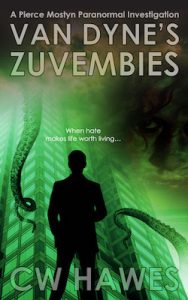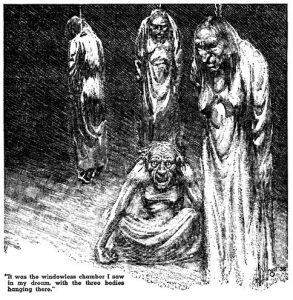Van Dyne’s Zuvembies is live! The seventh book in the Pierce Mostyn Paranormal Investigations series. And it is off to a good start.
Each Pierce Mostyn investigation is a stand alone story. So you can read Van Dyne’s Zuvembies today — and read the rest of the series later.
Interest in the paranormal is high, and paranormal fiction is hot.
But what is paranormal fiction? When I was kid, back in the 50s and 60s, there was no paranormal fiction: it was called occult or supernatural fiction. Sometime between then and now, those terms fell out of use in favor of paranormal.
To understand these 3 terms, let’s see what the Merriam-Webster dictionary says.
Occult (noun) — matters regarded as involving the action or influence of supernatural or supernormal powers or some secret knowledge of them; used with the
Supernatural
1) of or relating to an order of existence beyond the visible observable universe
2a) departing from what is usual for normal, especially so as to appear to transcend the laws of nature
2b) attributed to an invisible agent (such as a ghost or spirit)
Paranormal — not scientifically explainable: supernatural
So we can see all of these terms basically mean something that is not within normal or natural experience.
Therefore it doesn’t really matter what we call the genre, because paranormal, supernatural, and occult fiction cover the same subjects: myth, fairy tales, legends, cryptids, ghosts, monsters, the fae, and the like.
Popular subgenres include: cosmic horror, the ghost story, the Gothic novel, werewolf and other shapeshifter fiction, vampire and zombie fiction, and the like.
The paranormal story has been with us for a very long time and down through the ages has been called many different things. But in the end, they all refer to the same class of story.
At base, the Pierce Mostyn books are cosmic horror set in HP Lovecraft’s Cthulhu Mythos universe. However, I’m not averse to stepping outside the cosmic horror subgenre to give readers a taste of a different class of monster.
Horror stories generally operate either viscerally or intellectually.
Visceral horror is horror that focuses on an emotive reaction, often resorting to the gross out. This is the in-your-face blood and guts horror.
Intellectual horror appeals to the mind. It is usually subtle, and often challenges our understanding of how things ought to be by showing us how things actually are.
Intellectual horror flips aside the curtain; it is taking the red pill.
While there’s plenty of action in the Pierce Mostyn stories, I definitely strive for an intellectual horror approach. Because at the end of the day I think that type of story is truly terrifying.
Comments are always welcome! Until next time, happy reading!
Share This!
